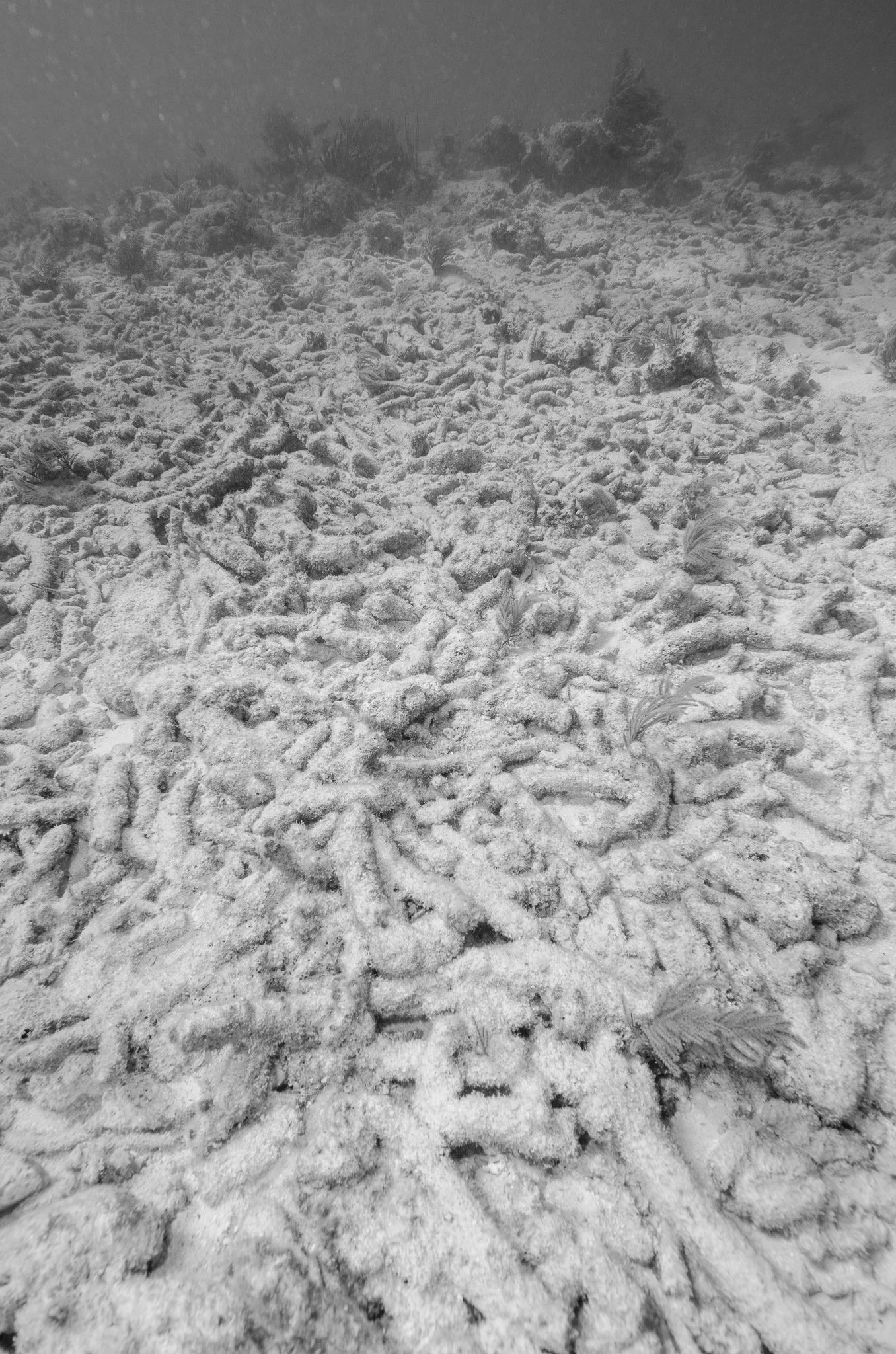Ciguatera Sampling. Shot on a Nikon F5*
Someone put me in charge for 6 days*
We traded Calli for Marlin on day 3
I dove my favorite site
*For the most part
The Team
A mediocre image to begin
Ilford HP5 pushed to 800
Leaving Bonita Springs, we followed the coast South. Marco Island is the last sight of land for 65 miles.
I’ve visualized photographing the Everglades for years. Mental imaging gives me a starting point. I imagined a piece of dry-rotted wood on a small key that extends into the distance. My visualization excluded June heat, 2cm horse flies, and ominous shallow water. Logistics.
[125 miles/37mph] + 3 colas= Arrival at KML
...
[125 miles/37mph] + 3 colas= Arrival at KML ...
Ilford Delta 400
My film jammed in a Patterson reel when I was developing. The reel has rough plastic in some places from manufacturing, causing the film to bunch up. Or I'm not good at this. The bent film looks similar to a lens flare, so it could be worse.
Keys Marine Lab sits between a fake cop car and Florida Boy restaurant. Once a USCG station, the large property gives research teams ample space after working in close quarters on long days.
The facility hosts multiple dorms, the largest being the admin dorm. With 16 bunks for our 2-4 person team, it's expansive. The kitchen with an island and barstools is our primary gathering space. Icecream and a computer with Netflix realize the full potential of the 3-couch living area.
Ilford HP5 pushed to 800
I loaded HP5 in a Nikonos V and sadly didn’t use it. I forgot to rewind when opening the back to move the film to another body. So I shot 3 exposures to advance the potentially exposed film. It wasn’t prematurely exposed, resulting in an exemplary image of the admin living area. My genius is ever-present.
Field Work



This field effort is my favorite reversal of gender roles. As a self-pronounced Halimeda spp. harvester, I typically gather macro algae while the ladies hunt fish for toxin research. And dinner. I think their job is more demanding than mine underwater. Above also.
Room to Breathe
Southern Stingray
Tennessee Reef Lighthouse. No tail or barb.
Nikon D7000
Reef Squid
At first, they were interested in me. Then I was interested in them. Then they were no longer interested in me. I lost Marlin and Susannah chasing after them.
Let’s be honest. I don’t know how to fish. Let alone game fish. But this is what I imagine those squid lures are supposed to be imitating.
Nikon D7000
Back at the dock


Fish is prepared for dinner a human toxin-loading study while tanks are filled.
At this point, I depart to the lab to finish processing samples wishing Adam was there to suffer with me. Listening to a centrifuge spin while sitting in a wet bathing-suit has become a new core memory of mine.
Fish courtesy of Calli Johnson. Accoutrements courtesy of Bailey’s General Store
KML Bay
“What’s your favorite dive site”
Two semesters ago, a student asked me a painful question with an easy answer.
Alligator Reef Lighthouse Reef
I haven’t had a “favorite dive site” since I was 10. Over the last decade, Florida’s coral reefs have been decimated for two reasons:
Stony coral tissue loss disease
Heat-induced bleaching
Many of the sites East coast charters take us to resemble the image above: Dead coral, macroalgae growing on dead coral, some sea fans, and gorgonians.
Before 2019 when I started diving for research, my passion for diving was absent. Working underwater in harsh conditions, problem-solving using zip ties and shackles stuffed in a mesh bag. That’s all I need. It helped me fall in love with diving again. For the work, though, not the fish. It wasn’t until I dove into KML’s marine sanctuary that I had my first “zen moment.” The tacky moment divers in documentaries talk about.
Nikon D7000
Nikon D7000
It's not the stillness but the motion I find calming. When a school of fish circles you, every move you make causes a reaction in one. The rest follow. I think it's calming because the biofeedback pushes you to stay still, breathe slowly, and watch your impact.
While there isn't coral here, the seagrass bed is a nursery for a few juvenile fish species and home to countless invertebrates.
A 4ft seagrass bed off Long Key is my favorite dive site.
Dive Profile: Basically Snorkeling
HP5 pushed to 800
The past few months, exposures like the one above sat cramped folder. I’d routinely come back to them to check on them. I’m not sure what I was expecting, but I felt the urge to do something for them. Now I know they just needed a space to breathe.
Thank you for breathing with them,
Alex













